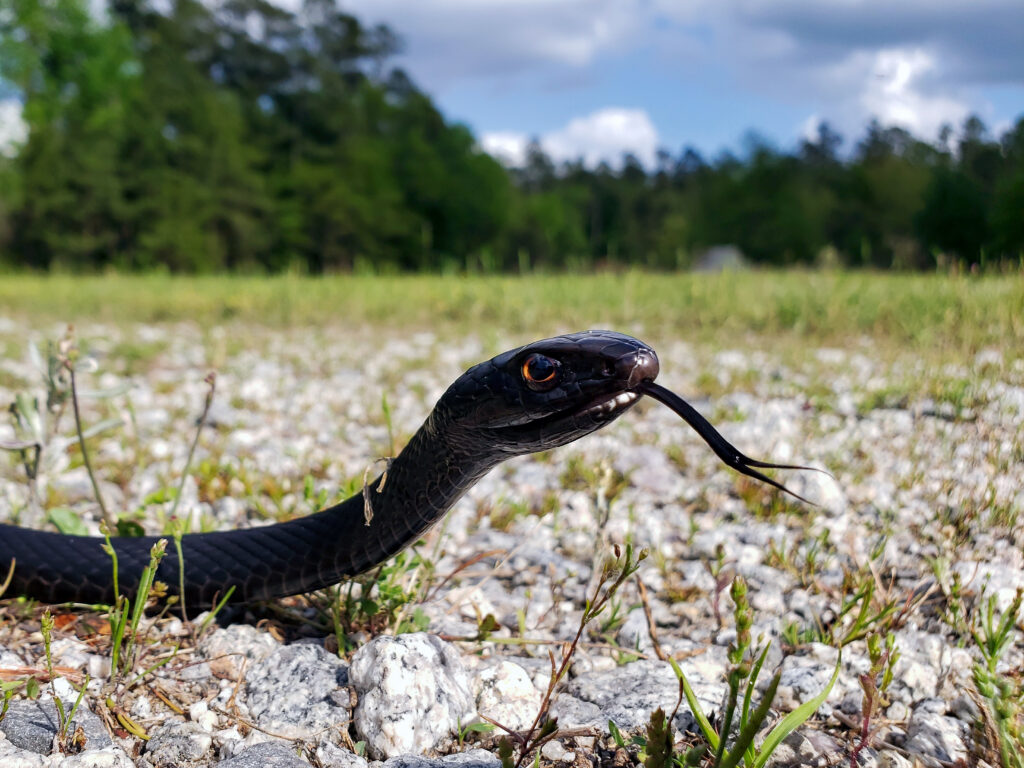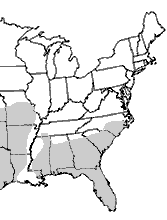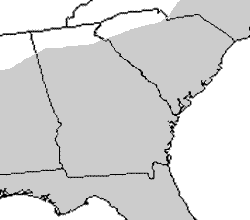Coachwhip (Masticophis flagellum)



Photos by Amanda Hurst unless otherwise noted
| Description: Although fairly slender, coachwhips are among the longest snakes in our region, reaching over 8 feet (244 cm). Their coloration is very distinctive, fading gradually from black on the head to tan or nearly white on the tail. The proportion of black to tan varies across our region and individuals in southern Georgia and Florida can be nearly completely tan. The pattern of scales on the tail resembles a braided whip, giving the snake its common name. Young coachwhips are very slender and completely tan with irregular darker bands and white markings on the head and neck. Coachwhips have large eyes and excellent vision.
Range and Habitat: Coachwhips are found throughout the southern United States from southeastern North Carolina to central California. In our region they are present in all but the mountainous areas of northern Georgia and northwestern South Carolina. Coachwhips are found throughout the Coastal Plain but are uncommon and patchily distributed in the Piedmont. They are particularly abundant in sandhills and coastal areas, including barrier islands. Coachwhips are most common in open habitats with sandy soils. Preferred habitats include open pine forests, sandhill scrub habitats, coastal dunes, old fields, and prairies. They are also occasionally found in modified habitats such as power line right-of-ways and agricultural areas. Habits: Coachwhips are only active during the daytime and are most commonly seen in hot weather. In fact, coachwhips are frequently observed during the hottest summer weather when other snakes are inactive. At night and during cool weather coachwhips take refuge in burrows or under cover such as boards or tin. Coachwhips hunt by sight and actively pursue prey, often with their head held high above the ground. They eat a wide variety of prey including insects, amphibians, lizards, snakes, birds, and rodents. In many areas lizards are particularly important prey and coachwhips are even able to chase down racerunners and skinks. When captured, prey are not constricted but are consumed alive. Coachwhips are probably the fastest snakes in our region and often streak away when approached. Although primarily terrestrial, they climb well and often take refuge in small trees or brush. When captured, some coachwhips readily bite while others are quite tame and may even hide their head and go limp. Coachwhips mate in the spring and females lay up to 24 eggs in early summer. Eggs hatch in the late summer or early fall. Interesting facts: Many people believe that coachwhips actively chase and whip people. Both myths are false. Conservation Status: Although generally uncommon in our region, coachwhips are not protected throughout most of it. They are protected throughout the state of Georgia. Account author: J.D. Willson |
